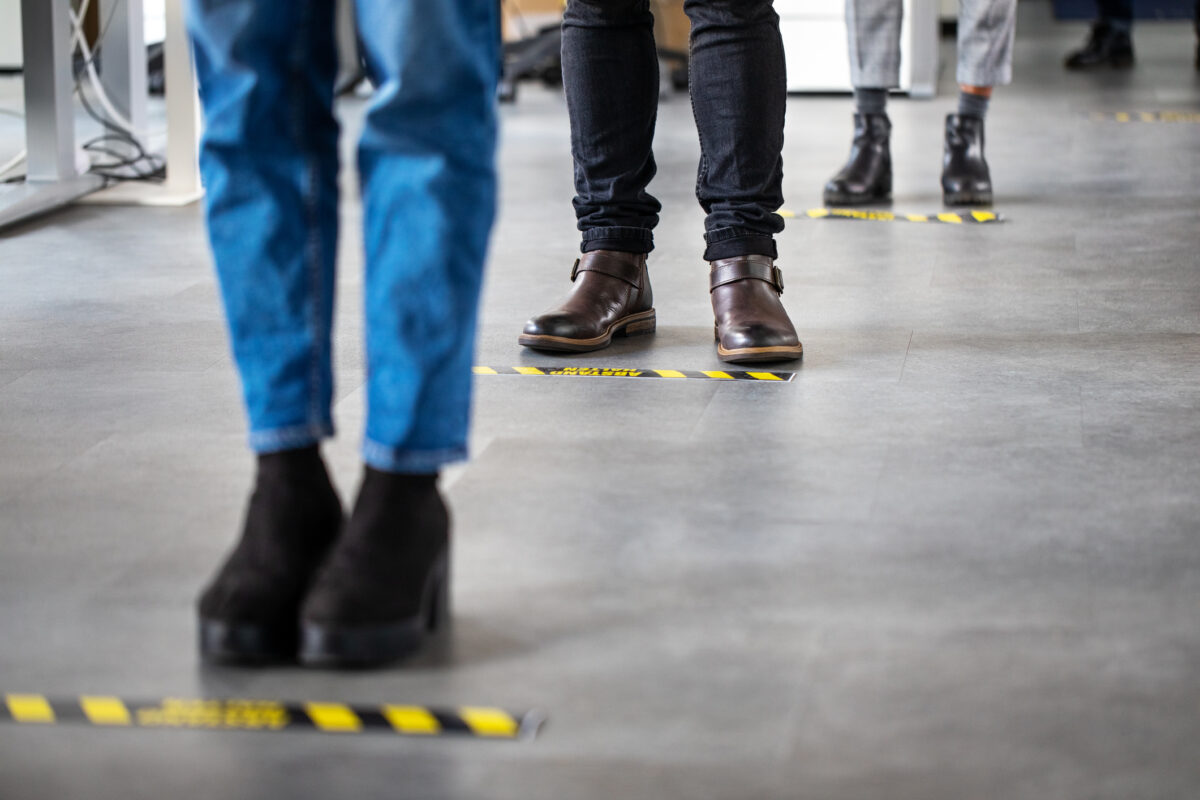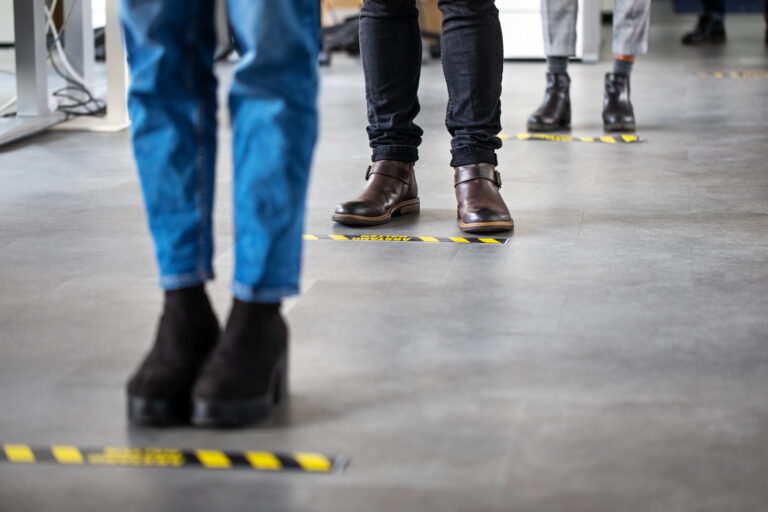Do not passively accept this time as a time of social and physical isolation; be proactive!
The global COVID-19 pandemic has sent billions of people into seclusion and isolation. This certainly has a cascade effect in accelerating emotional isolation, loneliness, and lethargy. But even before the pandemic hit, we were already in a sinking ship of emotional and social disconnectedness. We entered this pandemic with a booming economy, but the winds of change were already present. Banks were closing branch offices at an astonishing rate, live entertainment, cinema, and sports attendance was significantly reduced. We did not spend time with friends and family or know our neighbors as we did in bygone years. We were already “social distancing” long before the coronavirus arrived.
The life expectancy for Americans has dropped for the third year in a row, driven by the self-inflicted inclination for drug overdoses and suicide. Even before this pandemic struck, the number of lonely people was on the rise. Social isolation and loneliness may be a larger threat to public health than obesity or smoking. There are several pandemics which have risen like opportunistic pathogens in the wake of the COVID-19 pandemic. It is possible that these concurrent conditions will reduce the life expectancy of many people who survive the COVID-19 pandemic, possibly by years. The following is a compilation of some of these concurrent maladies.
Depression
Social isolation and loneliness combined with fear and increased alcohol and drug use will certainly increase the number of people suffering from depression. Depression brings with it self-destructive behaviors such as excessive alcohol consumption, drug use, and suicidal thoughts and tendencies.
Intellectual Atrophy
Social media has actually segregated us into homogenous groups. Social media and the news networks divide us into groups that think just like us, and thus eliminate the intellectual workouts of self-reflection and self-assessment. We are becoming intellectually lazy. This pandemic within the pandemic is intellectual atrophy. Atrophy is a word that implies the loss of strength due to disuse. We need to interact with people who think differently than us. If you only interact with people who agree with your religion, philosophy, or political persuasion, then you are in danger of intellectual atrophy.
Osteoporosis
Bone strength results from challenge and adaptation. If we do not consistently place a stressful load on our bones, they lose substance and weaken. Sitting at home will cause bone weakening in most people, but especially in the elderly. Since it is hard to regain bone strength after it is lost, especially in the elderly, we may see a rise in hip fractures and other bony injuries in the coming years.
Sarcopenia
While the word osteoporosis has entered the lexicon of most of the English-speaking world. Sarcopenia is a newly introduced word. It is a term which suggests the progressive decline of muscle mass, frequently attributed to the effects of aging. Muscle mass plays a considerable role in health. Not only is it important for mobility, but it also has important roles in glucose metabolism and cardiovascular health, including regulating blood pressure.
Inactivity or a reduction in muscular challenge will result in a loss of muscle mass. Loss of muscle strength and mass (sarcopenia) has a direct effect on the quality and quantity of a person’s years.
Dementia
Loneliness contributes to the loss of cognitive dexterity and contributes to dementia. With millions of seniors in isolation, and many of them with some degree of cognitive decline already, we can anticipate an increase in clinical levels of dementia in that population as we progress through this extended period of isolation.
Malnutrition
Many school-aged children in our economically depressed communities rely on school lunch programs to obtain proper nutrition. With the suspension of school, there is a reduction in subsidized meal programs for those enduring economic hardships. Not only the poor, but also the elderly are at risk for malnutrition. They are already more predisposed to inadequate caloric or food intake, poor food choices, and the inability to shop for or prepare food. These factors are now compounded by the current situation.
Substance Abuse
People stuck at home during the COVID-19 crisis are both bored and anxious. This is a recipe for substance abuse. In the U.S., “off-premise” alcohol consumption was elevated by 55% in late March 2020. The longer this isolation persists, and the more people become absorbed with the negative news stories, the greater this problem will be.
Domestic Abuse
Domestic abuse increases when families are confined together. Reports from around the world are showing that we are facing a pandemic of domestic violence. The stew of confined living spaces, uncertain economic outlook, and a reduction in emotional and physical outlets, combine to heighten tensions and place the vulnerable at greater risk.
Cardiovascular Disease
A sedentary lifestyle affects cardiovascular health in many ways. The rate at which cardiovascular health diminishes with inactivity is astounding. Loss of movement will certainly accelerate the decline of cardiovascular health of those with a propensity toward cardiovascular disease, but anyone who is sedentary can expect a decline in cardiovascular fitness as well.
Obesity
It appears that obese patients are having some of the worst outcomes and more severe complications when they contract the COVID-19 virus. Ironically, the inactivity, constant access to food, and increased alcohol consumption will most likely lead to weight gain, one of the most predisposing factors for a negative outcome in COVID-19 patients.
Solutions are Multifactorial
Fortunately, solutions exist for most of these conditions.
Reject passivity. The primary prevention method is to take an active role in your own health and within your scope of influence. Do not passively accept this time as a time of social and physical isolation; be proactive. Exercise, engage in social activities (while maintaining proper protective measures), get outside, and make a concerted effort to eat properly and drink responsibly.
Engage socially with others, even those with different opinions … and keep it friendly. Accept their differences and move on with your relationship with them. You need your friends, and they need you. Engage them on topics of mutual interest. Do not engage in discussing who is to blame for what is happening. Use technology and find new ways to connect. There are many ways to communicate with both audio and video interactions. Avoid watching the news obsessively and interacting negatively on social media.
If you cannot think of anything else to do, go for a walk. Walking stimulates neuronal activity, preserves muscle and bone strength, pumps lymph fluid, and supports cardiovascular health and a positive mental attitude. Walking outside will also provide a boost in vitamin D levels. Walking helps almost everything mentioned in this article.
Finally, look out for others. Encourage those in your sphere of influence to walk and to socially engage. Reach out to shut-ins and talk to them. Ensure your family and friends are eating correctly. By being a source of light in this dark time, you will not only help others, but also improve your own mental health. Albert Schweitzer may have said it best: “I don’t know what your destiny will be, but one thing I know: the only ones among you who will be really happy are those who have sought and found how to serve.”
Provided by Dr. William E. Morgan, president of Parker University in Dallas, Texas. He has served as a consultant to the medical departments in the U.S. Capitol and the White House.

